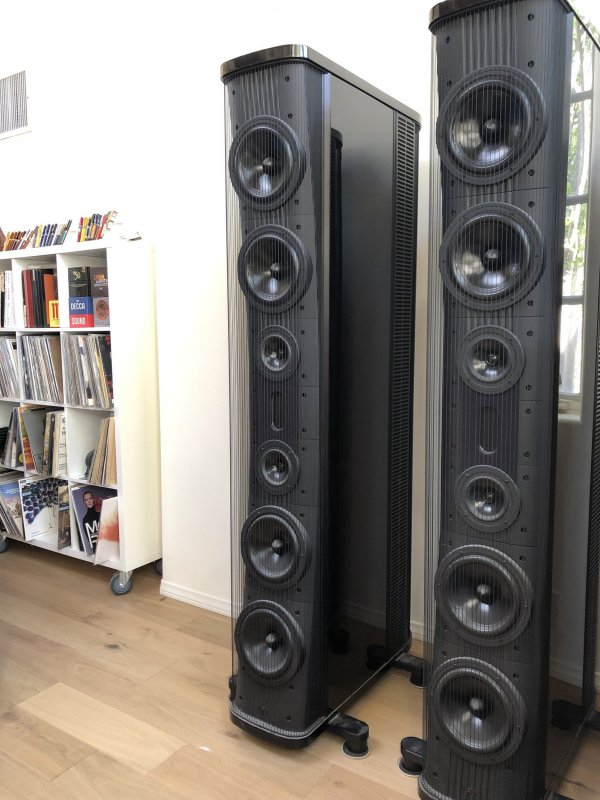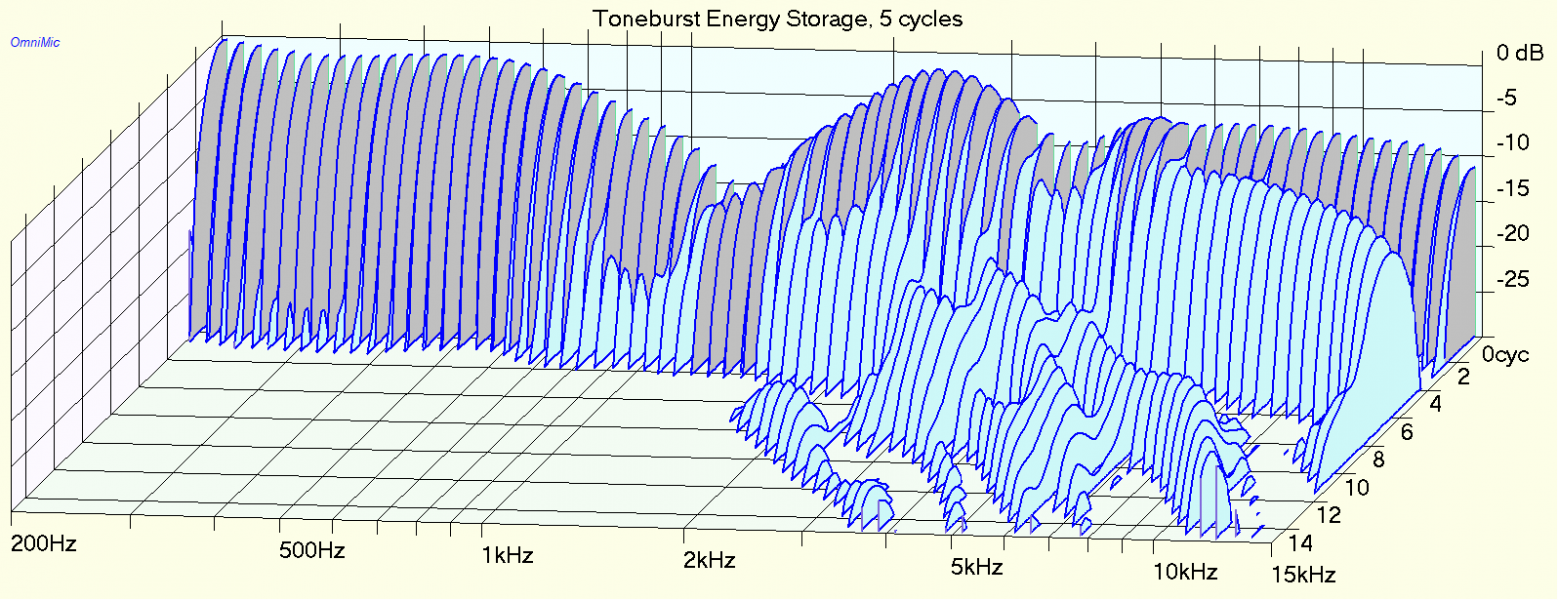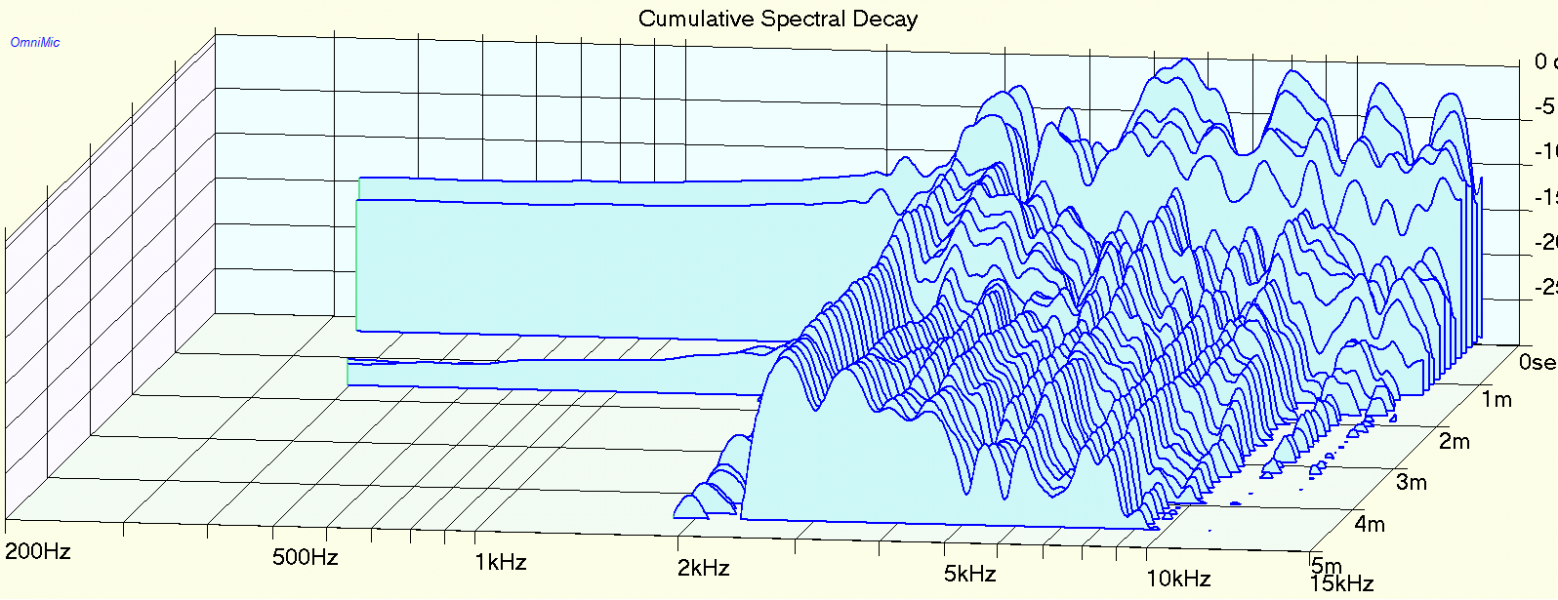Finally some measurements! These graphs and write up is from Mike Burns owner of Wolfsong Audio consultants.
The first image is from the final placement of the speakers and the seating. It is the Energy Storage Plot. Reference volume was 70 db. Short Sine sweep tone. The results show the room holds on to very little energy from 500 to 2K cycles and then has a fairly regular pattern from 2K to 15K. This means the room is not over damped and has a regular dissipation pattern. The fact that the higher frequency energy is stored up to and a bit beyond 14+ cycles shows that the room is not just a damped chamber but that ( IMHO ) the Diffusor panels are doing what they are supposed to in conjunction with the side wall absorbers.
2nd Image is the waterfall plot. Reference volume again was 70 db. Short sine sweep tone. I may have run the test with very short tracing as the graph runs to just 5 milliseconds. But the results to 5 Ms are impressive. With nearly zero measured “ring’ below 2K the bass and lower midrange is absorbed and dissipated almost totally. The 2K to 10 readings show rapid and even dissipation. We may want to do a 100 to 200 Ms reading later to see how long that decay does last.
My assessment of the measurements is that the room has very well controlled reflection and energy dissipation in the sub bass, bass, mi bass and lower midrange regions. I the mid to upper mid and treble the room exhibits even and rapid dissipation of energy without being over damped.
To my ears the room and system play with even response and the room effectively “disappears” into the soundfield. No mean feat with 7 foot tall speakers that play down to 16Hz! I also noted a very “natural” feel to the room upon entering. In walking around and speaking with you at no point did I feel like the room was taking away the natural decay of our voices.
View attachment 86216View attachment 86215









